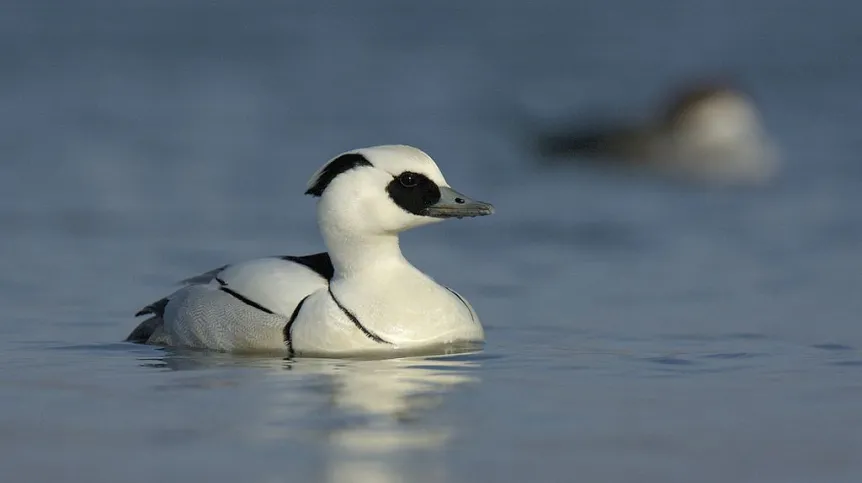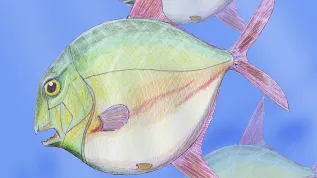
As a result of warming over the last 21 years, water birds – smews spend winter farther to the north east of Europe. The range change is easier with the network of protected areas Natura 2000, which has been confirmed by the study presented in the renowned journal "Diversity and Distributions".
Smew (Mergellus albellus) is a small, black-and-white relative of mallard, mandarin and long-tailed duck. It spends the spring and summer in the north of Eurasia and Scandinavia, where it nests. After clutches it flies to the south and west of Europe to spend winter in freshwater wetlands and shallow coastal areas. From October to April, it can also be found in Poland.
According to the recent study conducted in 16 European countries, over the last 21 years smew has been flying farther to the northeast for the winter.
In the years 1990-2011, the winter smew population increased especially in Estonia, where there are now 11 times more of these birds than two decades ago, and Finland (4.5 times more). To a smaller extent the smew population has also increased in Sweden, Norway, Denmark and the British Isles. There are less of them in the countries of central and southern Europe: Italy, Switzerland, Belgium and Germany (approx. 30 to 60 percent less).
It has long been known that the change to the range of occurrence - year-round or seasonal - is one of the strategies that allow different species to survive climate change. Also in case of smew, the escape northeast is its response to warming. "This change probably started earlier, but only until now we could clearly see it after comparing data from the whole Europe" - told PAP one of the authors of the publication, Prof. Włodzimierz Meissner of the University of Gdańsk. Another Polish participant in the study is Łukasz Ławicki of the West Pomeranian Nature Society.
According to Prof. Meissner, other species can react like smew. "Water birds can not overwinter in the same place where they breed, because they would not be able to find food. That is why in winter they move to the south and south-west of the continent, where the climate is milder and where they will find enough food. It is most efficient, however, to not go too far and spend winter as close to breeding grounds as possible to avoid wasting energy on migration, and be able to quickly return to the breeding grounds in the spring. Global warming means that in general birds can spend winter closer to breeding grounds, which is beneficial for them. This also applies not only to smew" - he explains.
Smew study also confirmed that even after the change of distribution of the main wintering areas, smew protection is still possible. It is facilitated by the special protection areas Natura 2000, designated under the EU Birds Directive. Well-distributed network of protected areas can thus alleviate the potentially negative effects of climate change on bird populations - noted the authors of the study.
"If smew changes wintering range and moves to the north of Europe, where it also goes to the Natura 2000 sites - this confirms that these areas are correctly designated" - said Prof. Meissner.
"Currently, one third of the total population of smew winters in north-eastern Europe. For comparison, two decades ago it was only 6 percent. Moreover, the rate of population growth in the region in the last 25 years was also two times faster within the Natura 2000 special protection areas, than in areas not protected under the Natura 2000" - noted Diego Pavon Jordan from the Finnish Museum of Natural History in Helsinki.
According to the authors of the analysis, the results of new studies also confirm that the Natura 2000 network, especially in the northern part of the wintering grounds of smew and other species of water birds, there are serious gaps.
Most of the special protection areas were established many years ago, without taking into account the environment changes occurring as quickly as we see today. Currently, eight out of ten smews wintering in Latvia and Sweden are in areas that do not have any protection status. In Finland, almost all birds overwinter outside the network of special protection areas.
The results were based on the data from annual, winter waterfowl counts in Europe, coordinated by the international organization "Wetlands International". (PAP)
zan/ agt/ mrt/
tr. RL













